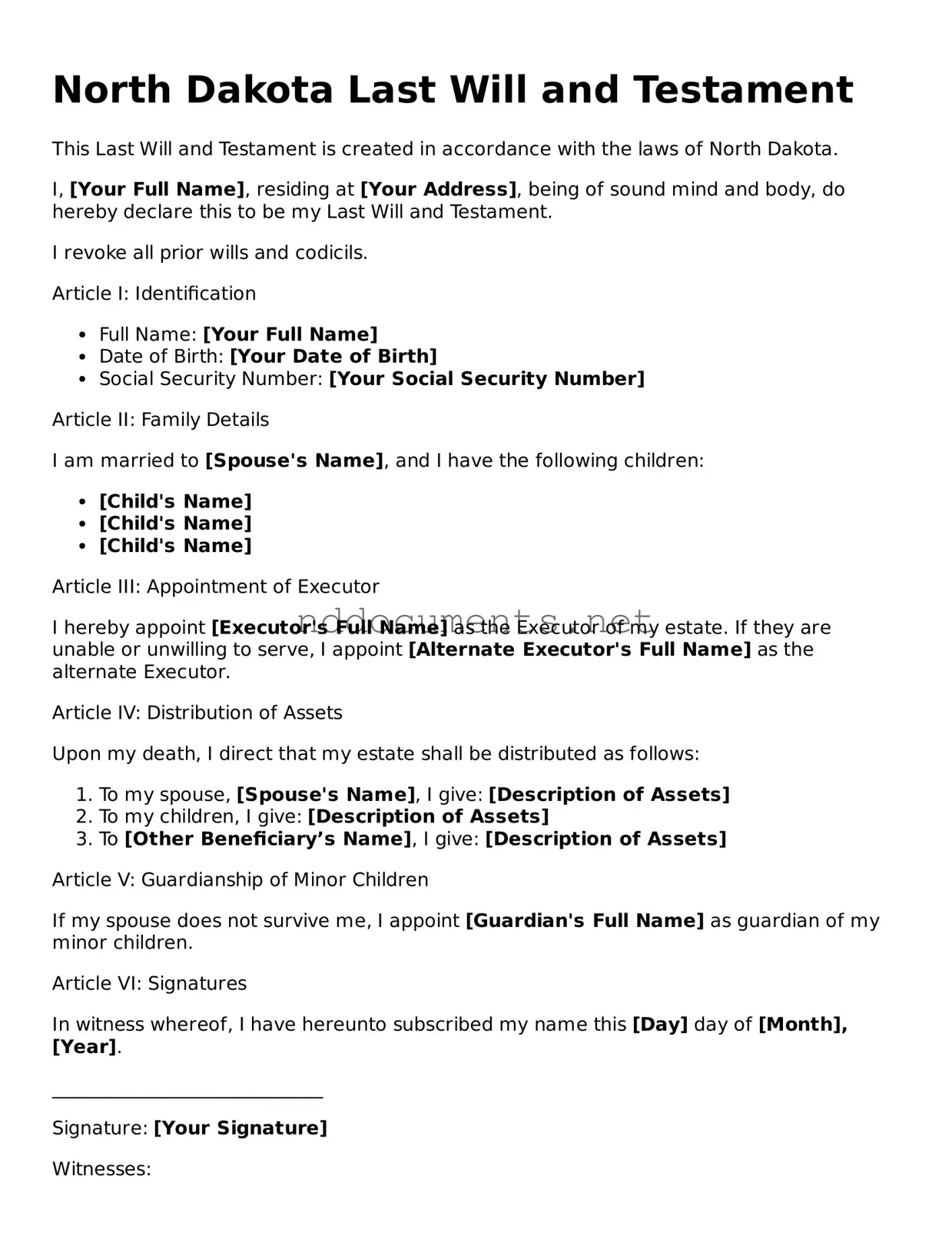Fillable Last Will and Testament Document for North Dakota
The North Dakota Last Will and Testament form is a legal document that allows individuals to outline their wishes regarding the distribution of their assets after they pass away. By creating this form, you ensure that your intentions are honored and your loved ones are taken care of according to your preferences. Understanding the components and requirements of this form is essential for effective estate planning.
Make Your Document Online
